Abstract
Previous studies have indicated that exposure to elemental mercury is associated with increased short term memory scanning time. In an effort to provide converging evidence that short term memory is one locus of the neurotoxic effect of mercury, two measures of short term memory capacity were used in this study. The first measure, the Wechsler digit span forward, was too imprecise and unreliable to detect any adverse effects. The second measure, an estimate of the worker's 50% threshold for correct serial recall, was more satisfactory and provided evidence of a statistically significant decrease in short term memory capacity associated with increasing exposure to elemental mercury (based on a group of 26 workers, urinary mercury average 0.20 mg/l, range 0.0-0.51 mg/l). A replication study of another group of 60 workers was performed to confirm this apparent mercury related effect. Despite lower urinary mercury concentrations in this second group (0.11 mg/l average), a statistical association was again observed relating urine mercury to reduced short term memory capacity.
Full text
PDF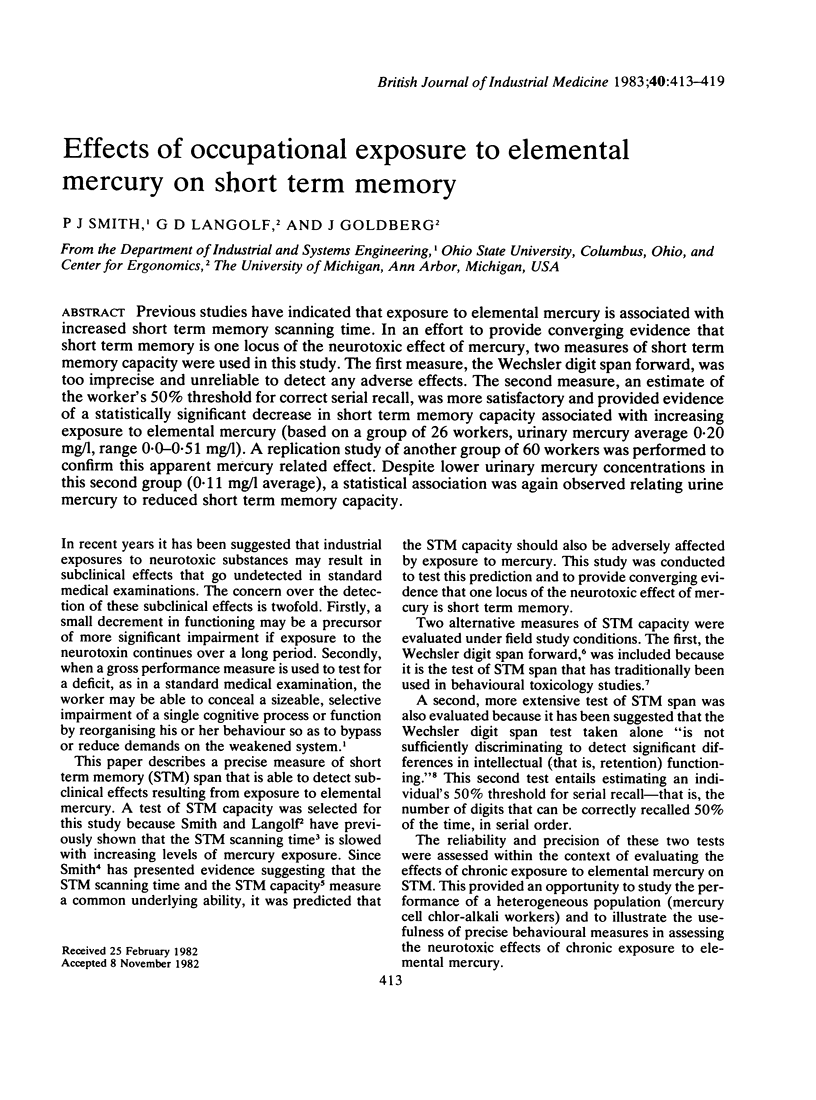


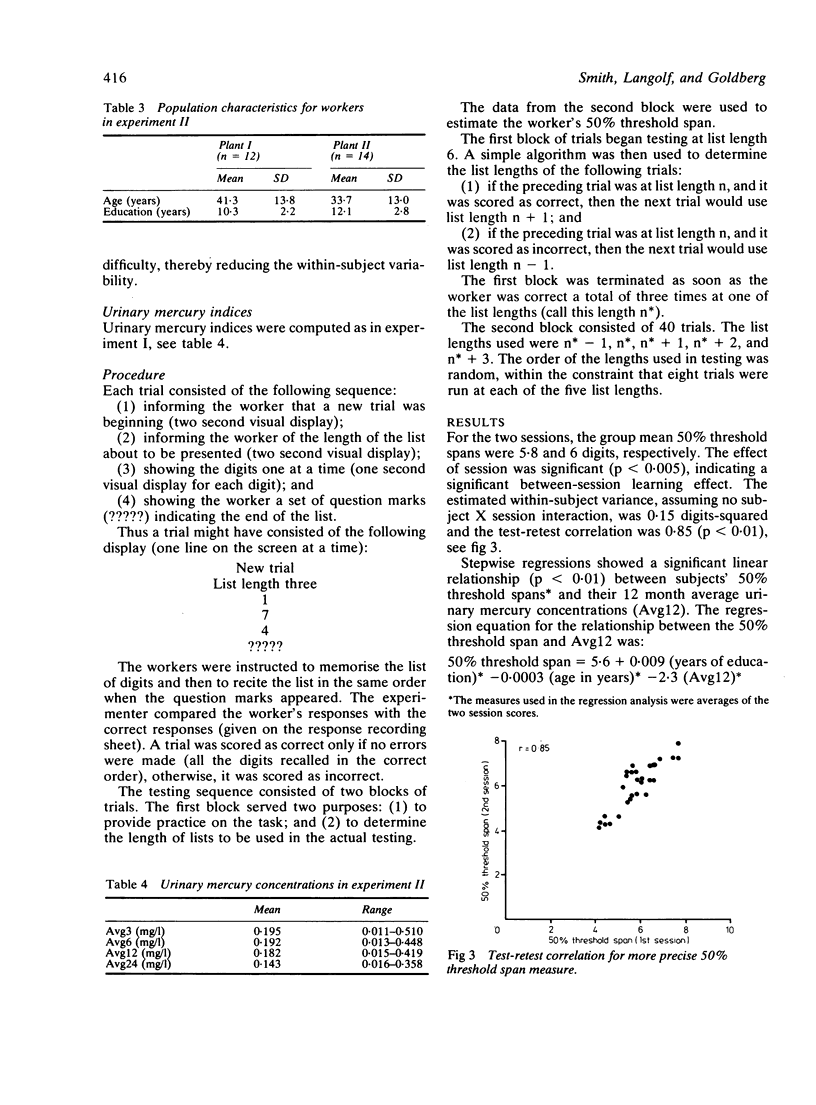
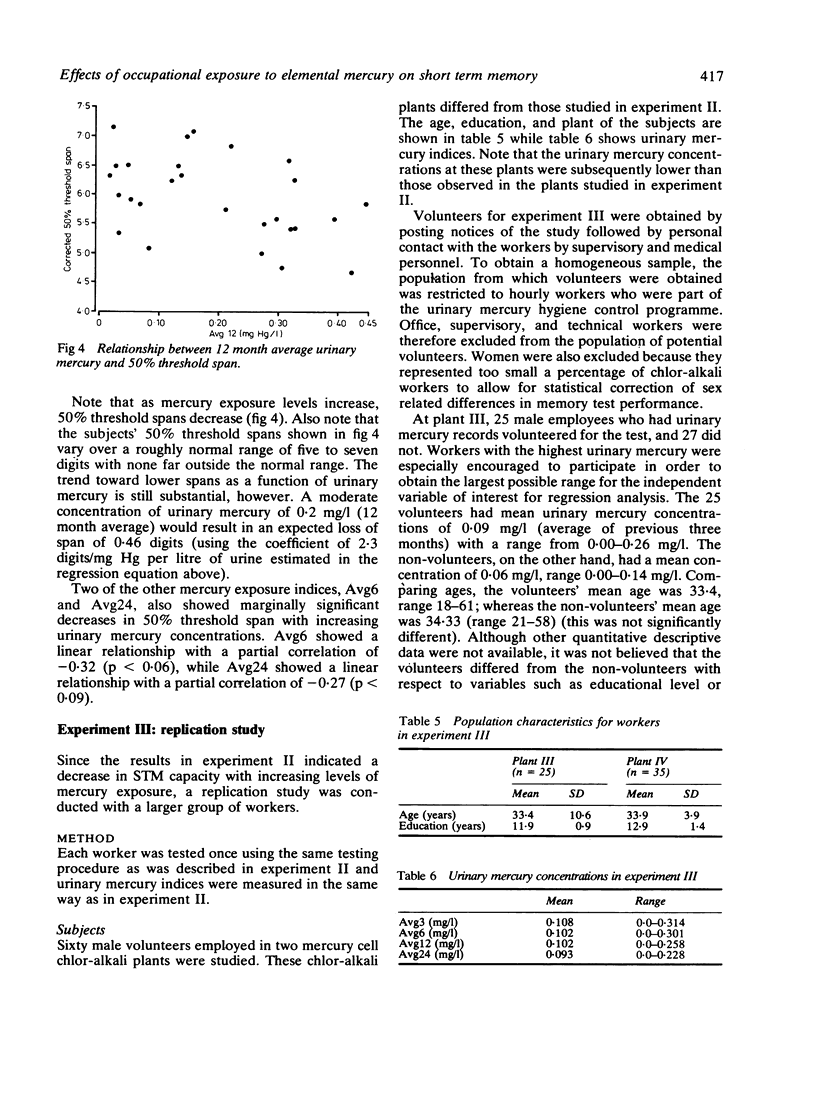
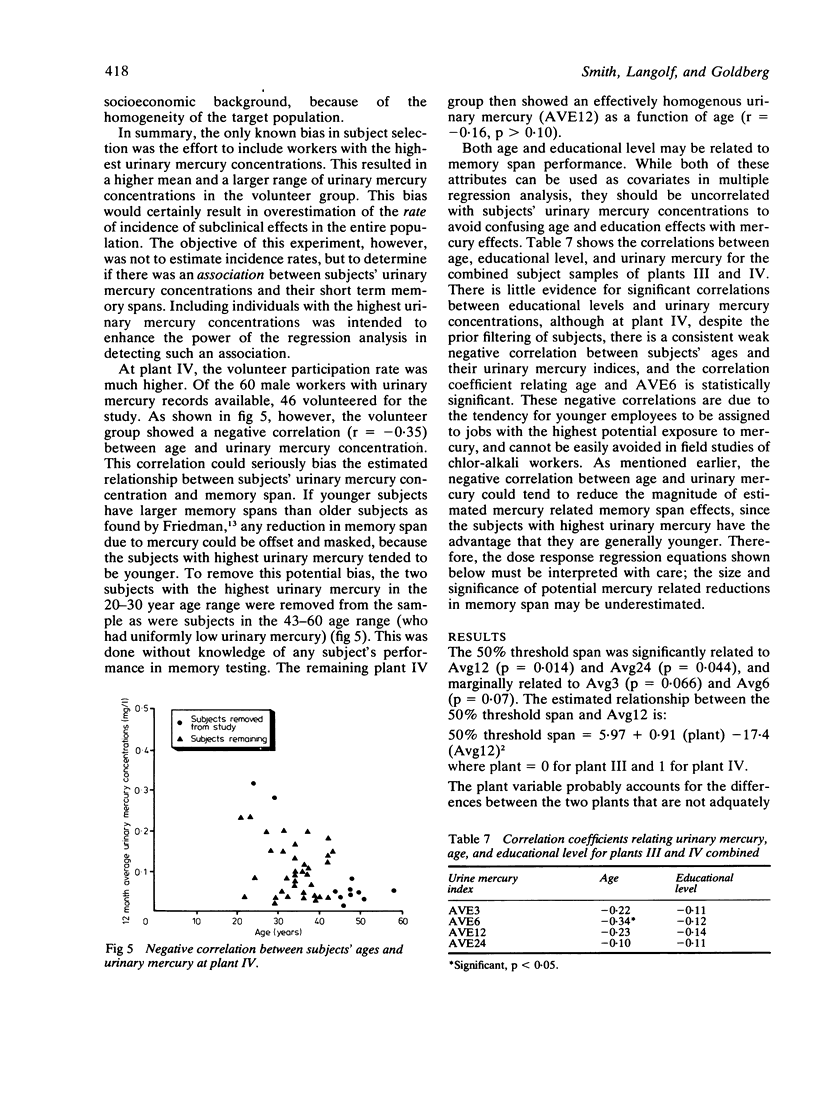
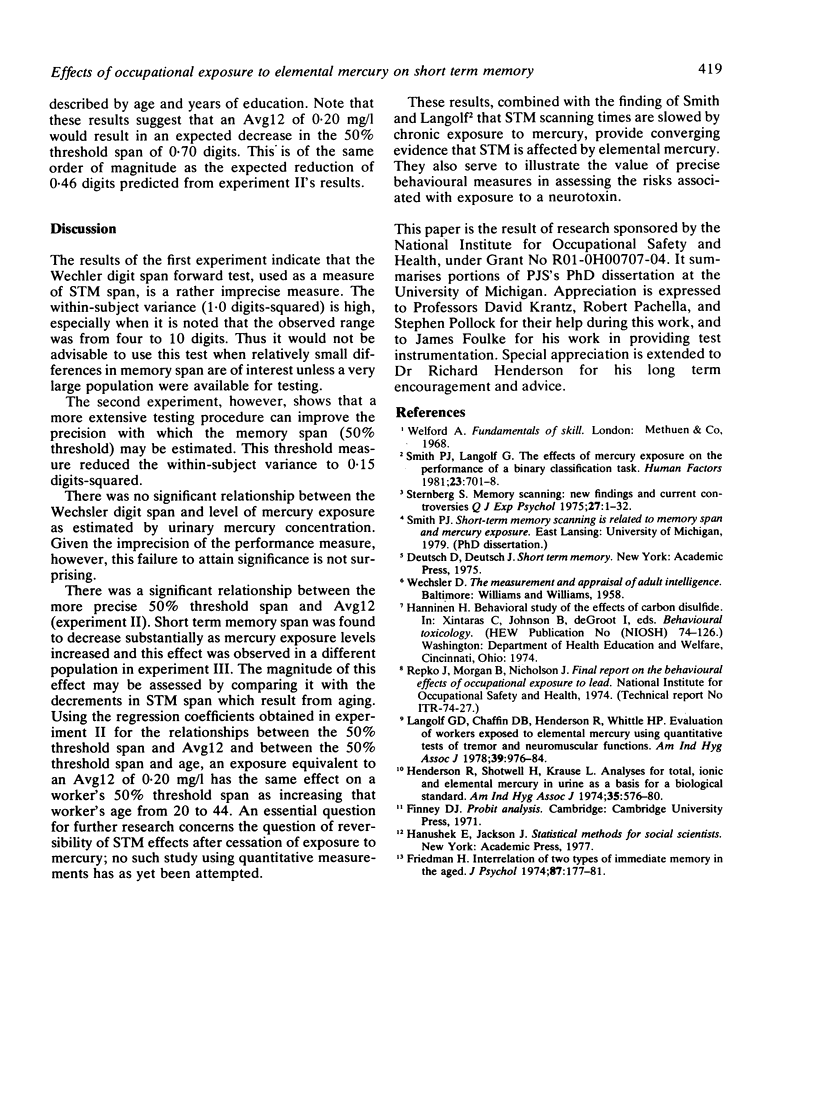
Selected References
These references are in PubMed. This may not be the complete list of references from this article.
- Henderson R., Shotwell H. P., Krause L. A. Analyses for total, ionic, and elemental mercury in urine as a basis for a biologic standard. Am Ind Hyg Assoc J. 1974 Sep;35(9):576–580. doi: 10.1080/0002889748507075. [DOI] [PubMed] [Google Scholar]
- Langolf G. D., Chaffin D. B., Henderson R., Whittle H. P. Evaluation of workers exposed to elemental mercury using quantitative tests of tremor and neuromuscular functions. Am Ind Hyg Assoc J. 1978 Dec;39(12):976–984. doi: 10.1080/0002889778507898. [DOI] [PubMed] [Google Scholar]
- Smith P. J., Langolf G. D. The use of Sternberg's memory-scanning paradigm in assessing effects of chemical exposure. Hum Factors. 1981 Dec;23(6):701–708. doi: 10.1177/001872088102300607. [DOI] [PubMed] [Google Scholar]


